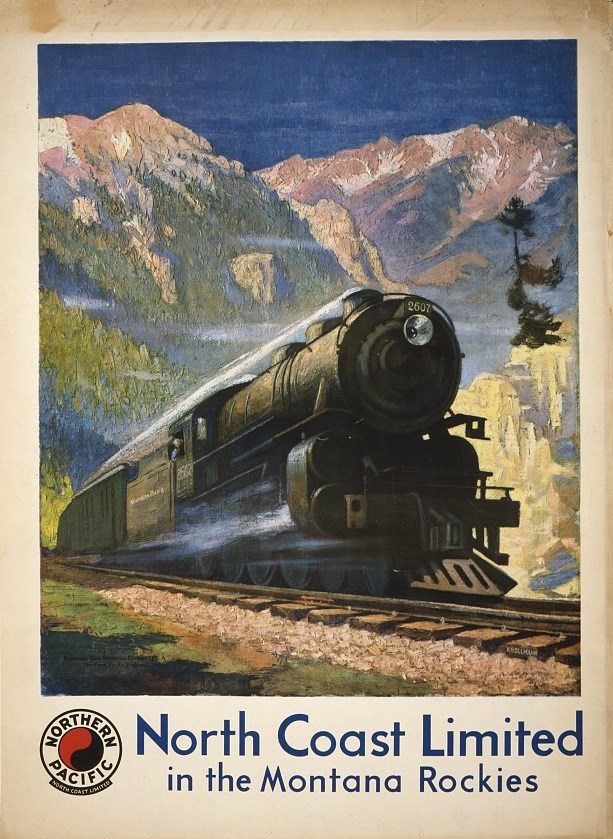Last updated: July 31, 2021
Article
Discover our Shared Heritage through Travel
This article was researched and written by Dr. Katherine Crawford-Lackey.

Exploring through “Place”
Travel can be a way for us to encounter and experience places and cultures associated with our own heritage. It can also provide educational experiences that teach us about other cultures and peoples. Travel can be a first step in facilitating understanding of different cultures, which in turn builds empathy and connects us to our global community.
What is it exactly that inspires this zeal for travel? And how do our explorations via planes, trains, and automobiles affect the planet? Heritage travel, sometimes called cultural tourism, is learning about the past through place and cultural experiences. We seek to use place as a vessel to learn about the past. By doing so, we give special meaning and significance to our physical surroundings. As we focus on place, we can also consider how to acknowledge and honor all those who have gone before and created the world we now inhabit.
Many visitors associate the National Park Service with breath-taking natural landscapes in the west. But did you know that two-thirds of National Park units are history and culture based? You’ll even find history at places like the Grand Canyon, Zion, and Yosemite.
The National Park Service offers many ways to learn about America’s most treasured natural and cultural spaces. In addition to visiting a park, you can explore other sites through “Discover Our Shared Heritage Travel Itineraries” which feature historic places across states and territories. Ideal for those armchair explorers looking to learn more about places both near and far, the itineraries highlight historic sites based on geography and theme. Some of these places are cared for by the National Park Service, others participate in the National Heritage Areas program, and many properties are listed in the National Register of Historic Places. Explore some lesser-known stories through the “Travel American Utopias” and “Travel the Amistad Story” itineraries. But there are lots more for you to discover!
Structured around a geographic region or theme, the itineraries offer an opportunity to travel sites either on the road or from the comfort of home. While some are ideal for an in-person day-trip, including the Baltimore, Charleston, Detroit, and Chicago itineraries, others may take days or even weeks to travel. Instead of driving the roughly 2,400-mile stretch of highway along Route 66, the travel itinerary provides information about historic sites located in each state it crosses.
You can also use the travel itineraries to learn more about specific themes in American history. The “Travel Where Women Made History” itinerary features places associated with ordinary and extraordinary American women. From schoolhouses, universities, and factories to courthouses, parks, and farmsteads, women have shaped every aspect of society.
“We Shall Overcome” and “Travel Asian American and Pacific Islander Heritage” feature places that tell a fuller story of American history. You’ll learn about how all walks of life played a profoundly important role in shaping American culture.
For those seeking digital adventure, we also recommend exploring Curiosity Kits. As curiosity plays a big part in fueling our desire to travel, these are the perfect tools to assist in your virtual adventures. You’ll find places associated with cowpokes , Black baseball, NASA scientists and much more! The included inquiry questions and activities are ideal for families, historical interpreters, and armchair explorers looking for some interesting historical treats.

Virtual Travel
Most of us have an appetite for adventure, but we don’t always get to travel as much as we’d like. Have you ever considered taking a virtual trip?
Think about a historic place you’ve visited. How did it change your perspective about the past? The present?
What about places you’ve never been to? Are you still curious about them if even if you may never visit in person?
While some of us are committed to visiting every National Park and Historic Site (kudos to you folks!), the rest of us might not get around to it all. Even if we don’t visit a place in person, we still feel an appreciation for it. Virtual travel is a way to feed our heads and hearts without emptying our pocketbooks.
Virtual travel also will help you reduce your carbon footprint. Our choices make a difference. Every individual has opportunities to work toward a more sustainable future.

Travel and Historic Preservation:
Heritage tourism also underscores and supports the need for comprehensive preservation efforts. We travel not just to experience local festivities or food – we seek to acknowledge and honor past people by visiting historic places. We want to stand in a spot and see the world through their eyes – this power of place is one of the most tangible connections we have to the past.
Many buildings, sites, and landscapes associated with our nation’s history have been destroyed over the years by natural and human forces. Luckily, proponents of the historic preservation movement, which began in the early-to-mid 19th century, have been working to save these cultural treasures.
The National Park Service is dedicated to conserving both natural and cultural places for the enjoyment of the public. Visit the agency’s “Historic Preservation” website to learn more about how the NPS preserves important places and stories.
With over 400 units (and thousands of places listed in the National Register), the National Park Service tells the story of some of America’s most pivotal moments. Through these places, we learn more about the American experience and about ourselves. The NPS travel itineraries are just one way to learn more about the story of “us” through place.
